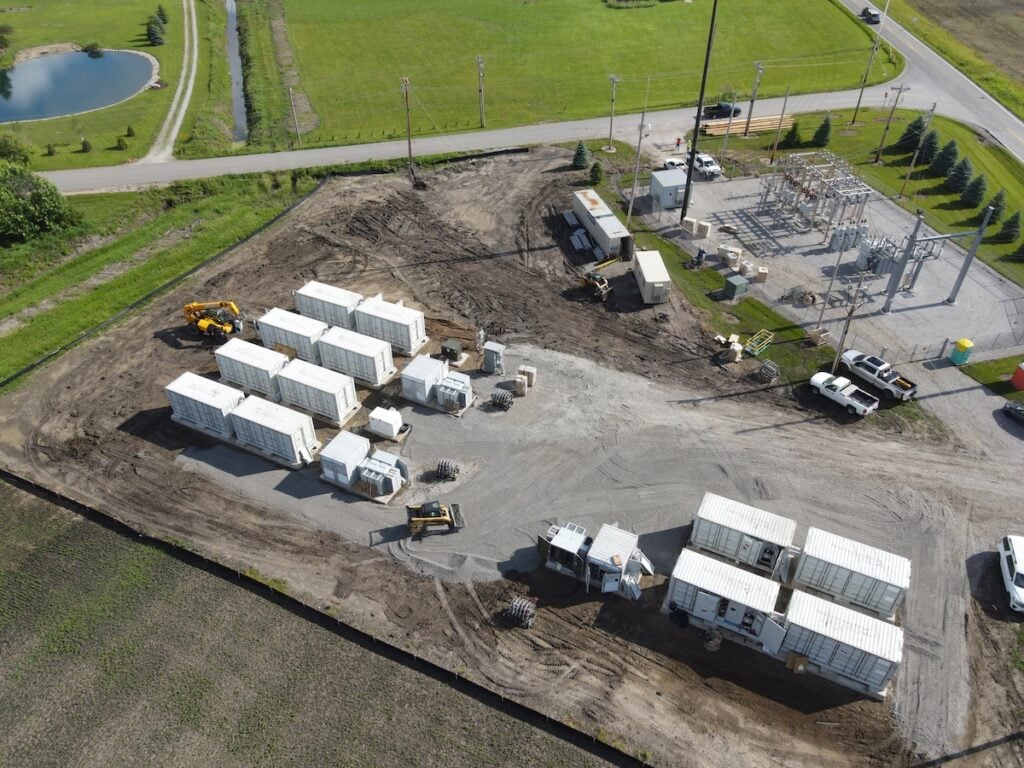
Battery storage paired with smart controls systems can enhance the market and technical operation of power plant fleets, whether wind, solar, coal, gas or almost any generation other technology.
In a recently announced project for independent power producer (IPP) Middle River Project, energy storage software and system integration specialist FlexGen will be putting battery storage systems at California natural gas power plants.
Enjoy 12 months of exclusive analysis
- Regular insight and analysis of the industry’s biggest developments
- In-depth interviews with the industry’s leading figures
- Annual digital subscription to the PV Tech Power journal
- Discounts on Solar Media’s portfolio of events, in-person and virtual
It’s just one of “countless” use cases where battery storage can enhance a power plant, FlexGen chief commercial officer Yann Brandt tells Energy-Storage.news in an interview.
As reported by the site in mid-January, FlexGen will be integrating 420MW/420MWh of battery energy storage system (BESS) equipment at four existing and operational Middle River Project (MRP) natural gas power plants.
In addition to procuring battery hardware from supplier CATL, the main – and perhaps most important – role that FlexGen will be playing in the project is deploying its energy storage operating system, Hybrid OS, and controls to the battery systems.
“The key to it is that every project is a little bit unique on how energy storage is used, so you have to make sure that the energy storage control system, the operating system, runs in tandem to what’s already existing on site,” Brandt says.
“Similar situations happen in solar plants and wind plants, all those controls are already on site, you have to get them to talk to each other. With [thermal] power plants, especially peaking plants, that gets to be a little bit more complicated. What enhances the complication and means it requires more of a digital solution is that this is four projects, four different sites.”
However, Brandt says, that complication or complexity is what makes projects like this valuable. Energy companies will need to be able to control their assets at fleet level to get maximum value from them, meaning potentially hundreds of sites that may have different technology combinations.
Batteries for ‘enhancement of site economics’
While there are advantages and benefits to adding energy storage at a lot of those different power generation types, for coal and gas plants, battery storage should be looked at as an “enhancement of the site economics,” Brandt says.
In MRP’s case, the batteries play two major roles: to take advantage of California’s abundant solar PV generation to fill the batteries with clean and cheap off-peak power, and to enable the simple cycle gas turbine (SCGT) generation to respond more quickly to signals from the CAISO grid.
In other words, “using energy storage, to respond to dispatches faster, or to respond to short dispatches of an existing plant,” Yann Brandt says.
“If you’re only being dispatched for 30 minutes, or something along those lines, why would you kick on a power plant just to run it for 30 minutes? You just run the battery, and then you recharge the battery at a later time.”
That means an efficiency and economic improvement from the customer’s standpoint, not needing to burn fuel or spend precious minutes ramping up the gas plant, but of course it also has a twofold decarbonisation benefit in reducing the peaker plants’ running time and increasing the use of solar PV on the grid.
Basically, at times when the grid needs electricity, the battery storage can fill in the gaps immediately during the gas plants’ ramping time. Brandt notes that there aren’t that many windows in a day when there is overproduction of electricity on the CAISO grid, so the short-duration BESS units need to charge up quickly with low or negatively priced power.
It’s part of a changing paradigm for the traditional energy sector, which largely still uses the same control systems that were going into power plants 25 years ago, the FlexGen CCO says.
Energy-Storage.news’ publisher Solar Media will host the 5th Energy Storage Summit USA, 28-29 March 2023 in Austin, Texas. Featuring a packed programme of panels, presentations and fireside chats from industry leaders focusing on accelerating the market for energy storage across the country. For more information, go to the website.

